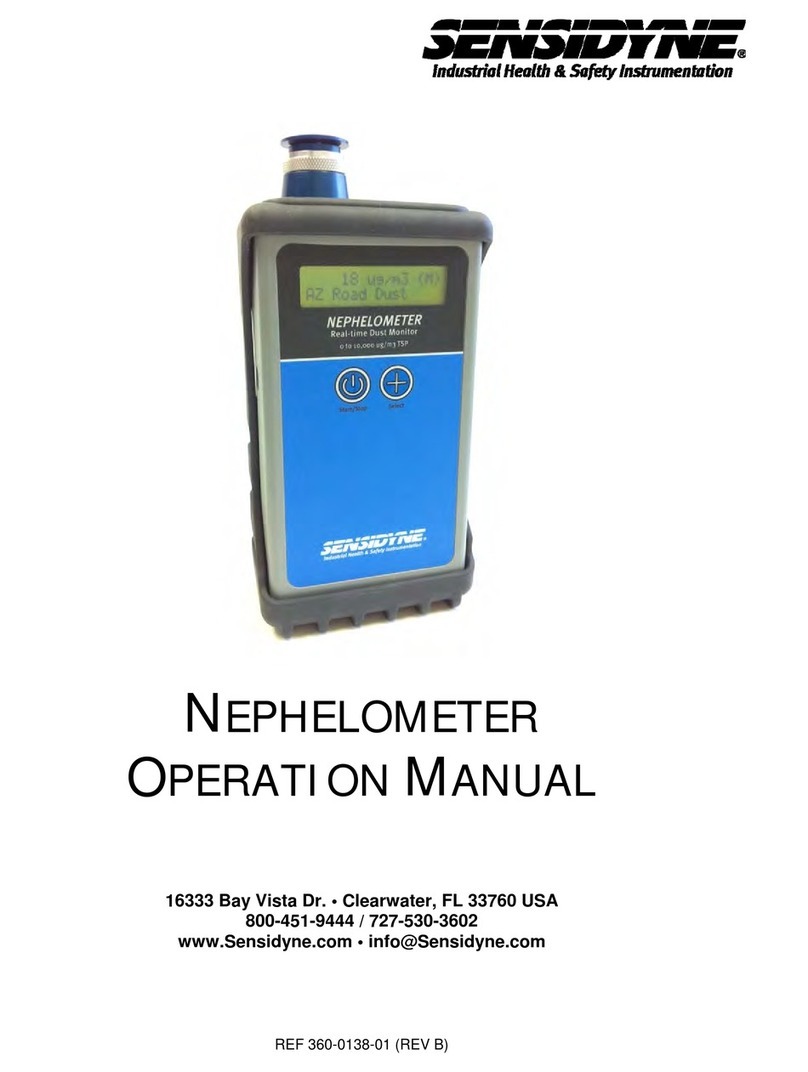
SensAlarm Plus – Universal Gas Monitoring System User Manual
Page 4 Document No. 360-0126-01 (Rev. D)
2.2 Fire or other Code Compliance Issues and annunciation requirements.............................................22
2.3 Monitor Installation..............................................................................................................................22
2.3.1 AC Power....................................................................................................................................24
2.3.2 DC Power ...................................................................................................................................25
2.3.3 Wiring Procedure (4-20 mA Output)...........................................................................................25
2.3.4 Wiring Procedure (Relay Outputs) .............................................................................................25
2.4 Start Up...............................................................................................................................................26
3 OPERATING FUNCTIONS..........................................................................................27
3.1 Calibration...........................................................................................................................................27
3.1.1 Zeroing the Monitor ....................................................................................................................28
3.1.2 Span Calibration.........................................................................................................................29
3.2 Sensor Adjustment..............................................................................................................................33
3.2.1 Select Calibration Gas................................................................................................................34
3.2.2 Selecting a K-Factor...................................................................................................................35
3.2.3 Selecting a Custom K-Factor......................................................................................................37
3.3 ToD Mode Adjustment ........................................................................................................................38
3.3.1 Auto Mode, Enable/Disable........................................................................................................39
3.3.2 ToD Auto Mode, Test Date/Time................................................................................................40
3.3.3 ToD Auto Mode, Days Between Tests.......................................................................................40
3.3.4 ToD Mode Adjustment, Cell Intensity.........................................................................................41
3.3.5 ToD Mode Adjustment, Output Indicators..................................................................................42
4 ALARMS, FAULTS AND RELAYS.............................................................................43
4.1 Alarms.................................................................................................................................................44
4.1.1 Add a Relay................................................................................................................................45
4.1.2 Delete a Relay............................................................................................................................46
4.1.3 Enable or Disable an Alarm........................................................................................................46
4.1.4 Ascending or Descending alarm threshold.................................................................................47
4.1.5 Alarm Setpoint............................................................................................................................47
4.1.6 Release Offset............................................................................................................................48
4.1.7 TWA Average Time Adjustment.................................................................................................48
4.2 Fault Functions....................................................................................................................................49
4.2.1 Add a Relay................................................................................................................................50
4.2.2 Delete a Relay............................................................................................................................50
4.2.3 Enable or Disable a Fault...........................................................................................................51
4.2.4 Adjust Fault Current....................................................................................................................51
4.2.5 Adjust Fault Current Delay .........................................................................................................51
4.3 Warn Current – Relay 5 .....................................................................................................................52
4.3.1 Warn Current-Relay 5, Latching/Non-Latching ..........................................................................52
4.3.2 Warn Current – Relay 5, Enable or Disable...............................................................................53
4.3.3 Low Current Time Adjust............................................................................................................53
4.4 Relay 1-Fail, Relay 2, Relay 3, Relay 4 ..............................................................................................54
4.4.1 Latching or Non-Latching ...........................................................................................................54
4.4.2 Norm Energized/ Norm De-Energized........................................................................................54
4.4.3 Time Delay..................................................................................................................................55
4.5 Horn – Relay 6 ...................................................................................................................................56
4.5.1 Latching or Non-Latching ...........................................................................................................56
4.5.2 Timeout (Enabled/Disabled).......................................................................................................56
4.5.3 Time Delay..................................................................................................................................57
4.5.4 Timeout Delay.............................................................................................................................57






























